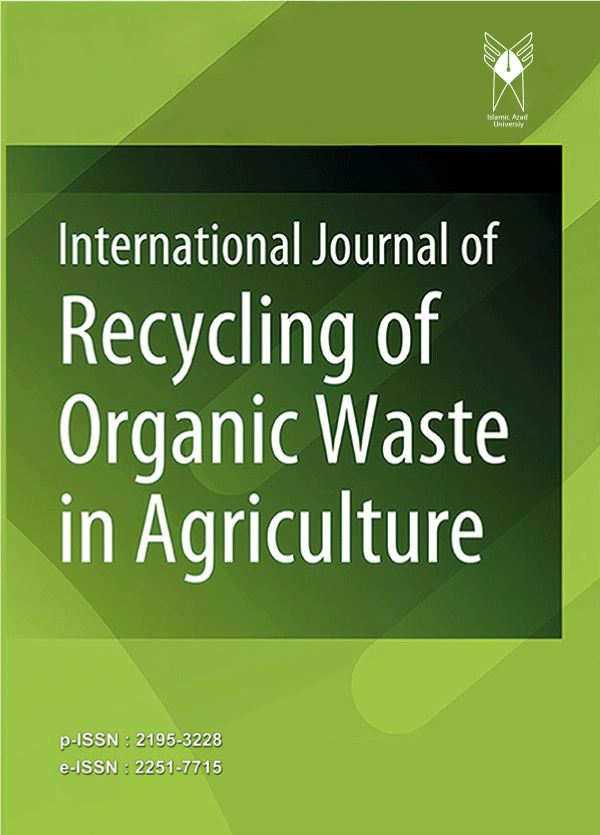Ver ítem
- xmlui.general.dspace_homeCentros Regionales y EEAsCentro Regional CórdobaEEA Marcos JuárezArtículos científicosxmlui.ArtifactBrowser.ItemViewer.trail
- Inicio
- Centros Regionales y EEAs
- Centro Regional Córdoba
- EEA Marcos Juárez
- Artículos científicos
- Ver ítem
Impacts of different pig slurry application methods on soil quality indicators in a maize-soybean cropping sequence in the Sub-humid Pampas of Argentina
Resumen
Purpose: In Argentina, pig slurry (PS) is spread in surface with N losses in ammonia form. Different methods to decrease these emissions are available, but there is poor information about their impacts on the soil-plant system. The objective of this study was to compare the effects of different PS application methods on the soil quality in a maize-soybean cropping sequence.
Methods: PS application methods were evaluated: acidified (AS), incorporated
[ver mas...]
Purpose: In Argentina, pig slurry (PS) is spread in surface with N losses in ammonia form. Different methods to decrease these emissions are available, but there is poor information about their impacts on the soil-plant system. The objective of this study was to compare the effects of different PS application methods on the soil quality in a maize-soybean cropping sequence.
Methods: PS application methods were evaluated: acidified (AS), incorporated (IS), surface (SS), mineral fertilization (MF) and control (C). The experimental design was arranged in a randomized block with three replicates. Chemical parameters and microbiological parameters were determined. Also, grain yields and N uptake were measured.
Results: IS caused increases in anaerobic nitrogen and basal respiration of soil on soybean. Treatments with PS and/or FM showed lower values in pH than C in both crops, and higher electrical conductivity only in maize. SS treatment showed higher Pe on soybean, indicating a maintenance of the P levels with respect to those in MF and C. The concentration of NO3- increased with MF in both crops. In maize, MF presented similar concentrations to AS and SS. IS increased grain yields of maize by 16 %, whereas SS and AS increased yields of soybean by 112% and 79%, respectively, compared to C.
Conclusions: The different PS application methods had similar effects on most of the indicators of soil quality. In maize, IS and AS were more efficient in retaining N within the soil-plant system, whereas, in soybean, the SS led to higher yields.
[Cerrar]

Autor
Pegoraro, Vanesa Romina;
Cazorla, Cristian Roman;
Bachmeier, Omar;
Baigorria, Tomás;
Boccolini, Monica Fabiola;
Ortiz, Jimena;
Lorenzon, Claudio Antonio;
Hang, Susana;
Zubillaga, Marta Susana;
Fuente
International Journal of Recycling of Organic Waste in Agriculture 9 (3) : 259-272 (September 2020)
Fecha
2020-09
Editorial
Islamic Azad University–Isfahan Branch
ISSN
2195-3228
2251-7715
2251-7715
Documentos Relacionados
Formato
pdf
Tipo de documento
artículo
Proyectos
(ver más)
INTA/PNNAT-1128042/AR./Tecnologías y estrategias de gestión de residuos y efluentes en sistemas agropecuarios y agroindustriales.
INTA/PNSUELO-1134042/AR./Aprovechamiento de residuos para aumentar el reciclado en el suelo. Sumideros de carbono y emisiones del suelo.
Palabras Claves
Derechos de acceso
Abierto
 Excepto donde se diga explicitamente, este item se publica bajo la siguiente descripción: Creative Commons Attribution-NonCommercial-ShareAlike 2.5 Unported (CC BY-NC-SA 2.5)
Excepto donde se diga explicitamente, este item se publica bajo la siguiente descripción: Creative Commons Attribution-NonCommercial-ShareAlike 2.5 Unported (CC BY-NC-SA 2.5)


